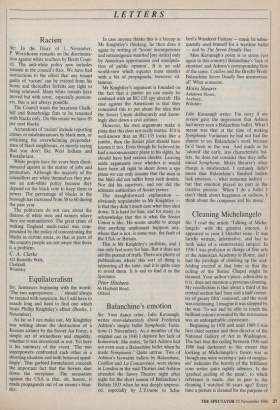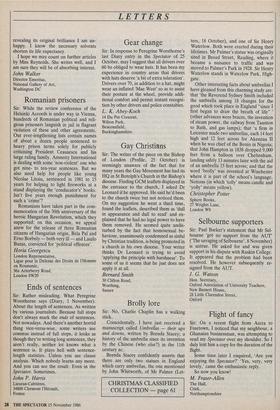Cleaning Michelangelo
Sir: I read the article 'Talking of Miche- langelo' with the greatest interest. It appeared in your 4 October issue. It was lucidly written, informative, and fair to both sides of a controversial subject. In 1936 I was professor in charge of fine arts at the American Academy in Rome, and I had the privilege of climbing up the scaf- folding erected at that time so that the ceiling of the Sistine Chapel might be cleaned. Your author's piece, admirable as it is, does not mention a previous cleaning: My recollection is that about a third of the central section had 'four and a half centur- ies of greasy filth' removed, and the work was continuing. I imagine it was stopped by the war. To see and be able to touch the brilliant colours revealed by the restoration was an unforgettable experience.
Beginning in 1938 and until 1969 I was first chief curator and then director of the National Gallery of Art in Washington. The fact that the ceiling between 1936 and 1986 had darkened to the extent that looking at Michelangelo's fresco was as though one were wearing a 'pair of sunglas- ses' indicates the brevity of the brilliance your writer quite rightly admires. Is the `gradual peeling of the paint', to which reference is made, due in part to the cleaning I watched 50 years ago? Every time a picture is cleaned for the purpose of
LETTERS
revealing its original brilliance I am un- happy. I know the necessary solvents shorten its life expectancy.
I hope we may count on further articles by Miss Reynolds. She writes well, and I am sure they will be of absorbing interest. John Walker
Director Emeritus, National Gallery of Art, Washington DC



































































 Previous page
Previous page